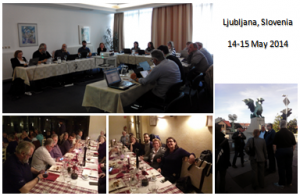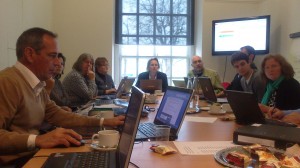Author Archives: Rita Lima
Videos
Events
15 May 2014
- Open Seminar – ONLINE ENTREPRENEURIAL COURSE - Faculty of Computer and Information Science in Ljubljana
Dissemination
Webinars
2nd Project Meeting – Ljubljana – 14-15 May
Since October 2013, in the FLITE Project, we’ve been working on a design document, using the rapid development process of ConCurrent Design (CCD) to design an online course aimed at those in the IT industry or studying IT at HE level.
This document can now be used by the course materials team to prepare the course.
Participants on the course will learn more about:
• their own skills and capacities through working with Business Model You
• how to use the rapid development collaboration process of ConCurrent Design
• issues to determine in a business plan through the use of the Business Model Canvas
During this second meeting in Ljubljana,Slovenia, organized by our partner XLab, we’ve been mostly discussing themes like:
• How can we teach and promote self-directed learning?
• How will we facilitate the formation of the international teams (especially in a large-scale pilot)?
• How detailed do the business plans need to be?
• Are business plans even the most appropriate end product?
• How will we resolve IP issues? Perhaps teams will work on their second best idea rather than their best idea?
• Could a storytelling framework help to bring the disparate parts of the course together?
At this meeting we also count with the presence of our volunteers Quality Board, whose contribution was very important to the discussion, since they brought an outside view to the project.
1st Project Meeting – London – Nov 2013
Members
The Challenge
The HE partners in the consortium wish to address the difficulties their graduates face when seeking their first job, as employers tend to demand prior experience.
Facilitating entrepreneurial skills in existing students by encouraging them to evaluate the potential of their institution’s research for implementation in industry will give HE students a legitimate reason to work with industry before being employed.
Similarly, in industry, participation in the proposed online training will give employees a reason to find out about innovative practices in their organisation and relevant research and will encourage intrapreneurial activity.
Why this Project?
Entrepreneurial ability is closely linked to the personality, cannot be taught in the traditional sense, but can be developed through training.
FLITE project will address the following 2 factors:
- HE graduates need more than just their degree to access employment. Their future employers across all sectors ask for and need greater capacity for entrepreneurial thinking and also experience in cooperation both at a distance and across cultural boundaries.
- The potential for knowledge transfer between HE and industry needs to be improved.
The consortium will jointly develop an entrepreneurial training that is designed to fit and bring together HE students and professionals within the IT sector. In this process they will use the Osterwalder business model framework developed for both personal and business development. It will raise their entrepreneurial awareness and promote bilateral knowledge transfer through collaboration between the two groups of learners
In a globalised world it is increasingly routine to collaborate online therefore the proposed training will be offered online.
The training will be offered online comprise a mixture of HE and industry-based learners focus first on personal development plans require small groups of learners to become familiar with their respective institutions’ innovations progress to a business development plan include an internal dissemination plan end with a peer-reviewed online presentation CCD is a highly structured process method to exploit the different stakeholders’ often conflicting requirements in an optimal way, thereby increasing collaboration and involvement in groups such as:
- Participants in an EU project
- A group creating an entrepreneurship training
- Students in an entrepreneurship training where they have to link the interests of different stakeholders at both universities and companies in preparing a business plan.
CCD is therefore our choice of process tool:
- For our project management
- Entrepreneurship training development
- The tool for students to use within the training
An external Quality board of industry, HE and student representatives will advise the project and will comment and add input on critical issues such as the key entrepreneurial skills to address and feedback on the pilots. The highly structured synchronous CCD process was adapted for distributed teams by partners in the current consortium.
The HE partners will integrate the dCCDF training in their institutions.









